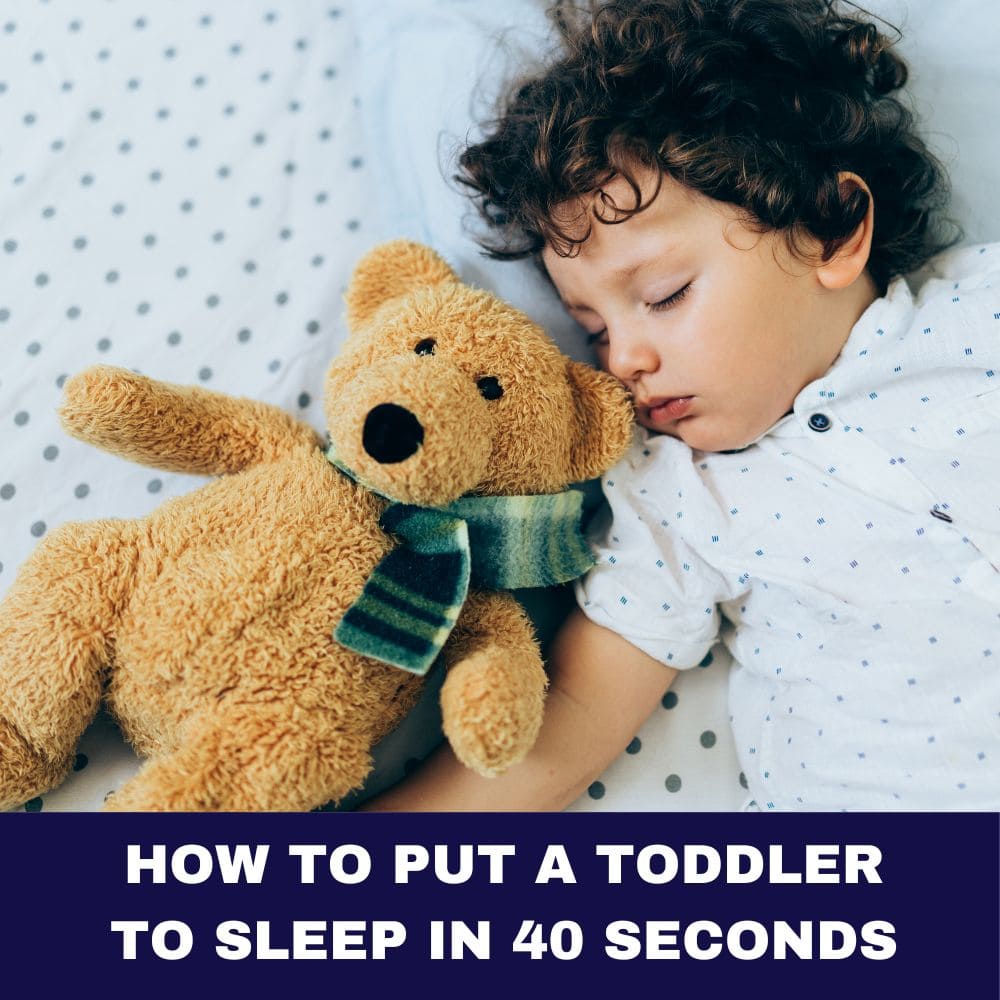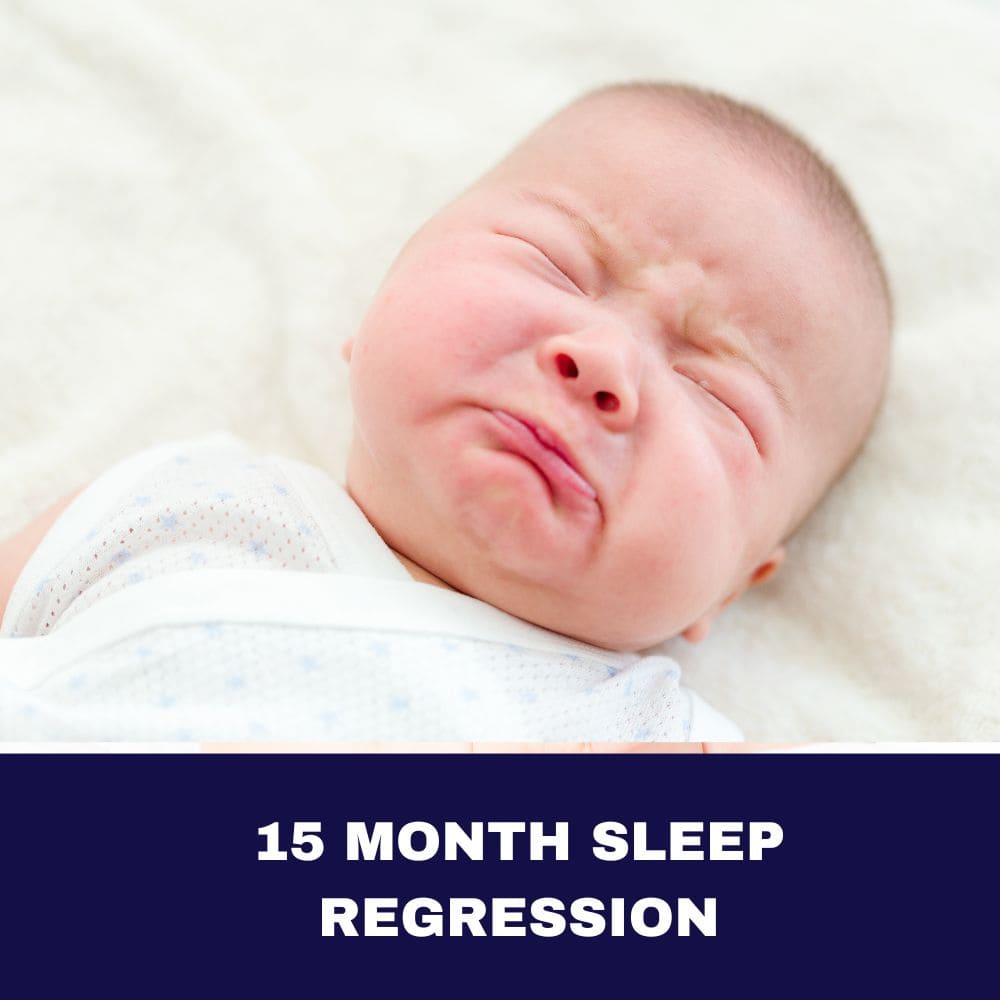The middle of the night can be a mystifying time for new parents. Just when you think your little one has drifted off into a peaceful slumber, the silence is shattered by wails of distress. Welcome to the dreaded “witching hour” – that bewitching period when babies seem to lose their minds. If you’re a sleep-deprived parent feeling utterly bewildered, you’re not alone. This enigmatic phenomenon has baffled caregivers for generations.
What is the Witching Hour, you ask? In simple terms, it refers to that untimely spell when an otherwise calm infant transforms into an inconsolable, shrieking banshee. The crying fits can last for hours on end, leaving you feeling helpless and drained. But fear not, for we’re about to unravel 9 unsettling truths that demystify this nocturnal challenge.

What is the Witching Hour for Babies?
The witching hour is that feared window of time, typically between 6 PM and midnight when some babies become fussy, agitated, and resistant to all soothing efforts. It’s as if a switch flips, and your previously angelic newborn morphs into a wailing, restless creature you hardly recognize.
This unpredictable phase tends to arise around 2-3 weeks after birth and can persist until the baby is 3-4 months old. While the exact timing varies, most parents report the peak of fussiness occurring in the late evening hours, hence the term “witching hour.”
| Signs | Description |
|---|---|
| Increased Fussiness | Your baby starts crying more frequently and is harder to soothe |
| Resisting Sleep | Despite being tired, your baby fights falling asleep or staying asleep |
| Inconsolable Crying | Normal soothing techniques like rocking, shushing, or pacifiers don’t seem to help |
| Clenched Fists | Your baby clenches their fists, which can be a sign of discomfort or pain |
| Arched Back | Your baby’s back arches, another potential sign of discomfort or reflux |
When Does the Witching Hour Start and End?
The dreaded witching hour doesn’t adhere to a strict schedule, as every baby is unique. However, most experts agree that it typically kicks in around 2-3 weeks after birth and can last until the infant is around 3-4 months old.
For some unfortunate souls, the witching hour may stretch from the early evening (around 6 PM) all the way until midnight or later. This extended period of discontentment can leave even the most resilient parents feeling like they’re at their wits’ end.
It’s important to note that the witching hour is a temporary phase. As your little one’s circadian rhythms and digestion mature, this bout of nighttime hysteria will eventually fade into a distant memory (though it may not seem that way in the thick of it).
Why Does the Witching Hour Happen?
While there’s no single definitive cause for the witching hour blues, experts point to a few potential culprits behind this nocturnal mayhem.
The Role of Newborn Sleep Cycles
Newborns have vastly different sleep patterns compared to older babies and adults. In the early months, infants spend more time in the lighter stages of sleep, making them prone to frequent night wakings and difficulty settling back down.
This immaturity in their sleep-wake cycles can contribute to the witching hour woes. As the evening progresses, overtiredness sets in, leading to a vicious cycle of crankiness and resistance to sleep.
Could It Be Colic?
For some babies, the witching hour may be a manifestation of colic – prolonged, unexplained bouts of crying that can last for hours on end. Colic typically starts around 2-3 weeks of age and often peaks in the evening hours, aligning with the witching hour timeline.
While the exact causes of colic are unknown, theories range from immature digestive systems to food sensitivities or even the intense stimulation of the day catching up to them. If your baby’s fussiness seems excessive and unrelenting, it’s worth discussing colic with your pediatrician.
Other potential contributors to the witching hour phenomenon include:
- Hunger/Feeding Issues: Babies may become increasingly hungry or have trouble with reflux/gas in the evenings.
- Overstimulation: After a full day of new sights, sounds, and experiences, some infants become overwhelmed and overstimulated by night.
- Growth Spurts: Periods of rapid growth and development can disrupt sleep patterns and increase fussiness.
What Are the Differences Between Colic and Witching Hour?
While colic and the witching hour share some similarities, such as prolonged crying fits in the evenings, there are a few key distinctions:
- Timing: Colic typically begins around 2-3 weeks old, while the witching hour can start a bit later, around 3-4 weeks.
- Duration: Colic is defined as excessive crying for more than 3 hours per day, at least 3 days per week. The witching hour, while intense, may not meet this strict criteria.
- Characteristics: Colic crying is often high-pitched, intense, and inconsolable, while witching hour fussiness can sometimes be soothed with various calming techniques.
- Underlying Causes: Colic is thought to stem from digestive issues, while the witching hour has multiple potential triggers.
However, the lines can blur, and some colicky babies may exhibit their worst symptoms during the infamous witching hours. If your baby’s crying seems excessive, don’t hesitate to discuss it with your pediatrician.

9 Unsettling Truths About the Witching Hour
Now that we understand what the witching hour entails, brace yourself as we unveil 9 unsettling realities about this nocturnal phenomenon that new parents should be prepared for.
1. It Can Last for Hours
Unfortunately, the witching hour isn’t just a brief window of crankiness. For many bleary-eyed parents, this phase can stretch for hours on end, with crying fits lasting well into the late night or even early morning.
During the peak of the witching hour, it’s not uncommon for babies to wail inconsolably for 2-3 hours straight, leaving caregivers physically and emotionally drained. Just when you think the storm has passed, another bout of wailing may ensue.
2. The Crying is Tough to Soothe
One of the most maddening aspects of the witching hour is how resistant some babies become to traditional soothing techniques. That go-to move of rocking, shushing, or offering a pacifier? Forget about it – your little one will have none of it.
The cries during this period are often high-pitched, intense, and seemingly impervious to your best efforts. You may cycle through every trick in the book – feeding, burping, diaper changes, baby-wearing – only to be met with more wails of protest.
3. It’s More Common with Firstborns
If you’re a first-time parent grappling with the witching hour, you’re not alone. Experts suggest that this nighttime fussiness is more prevalent and intense in firstborn children.
There could be several reasons for this phenomenon. Firstborns lack older siblings to help regulate their circadian rhythms and sleep patterns. Additionally, new parents may be more anxious and unsure of how to handle this phase, potentially exacerbating the situation.
Hang in there, rookie parents – this too shall pass! And for those tackling the witching hour with subsequent children, the experience (while still challenging) may feel slightly more manageable.
4. It Often Peaks Around 6 Weeks
While the witching hour can start as early as 2-3 weeks old, many parents report that the intensity tends to peak around the 6-week mark. This timeframe can be especially grueling, as the crying fits may become more frequent and prolonged.
There’s a simple biological explanation for this pattern. Around 6 weeks, babies experience a developmental milestone – their circadian rhythms (the internal clocks that regulate sleep-wake cycles) start to emerge and sync with the external world.
As your little one’s body adjusts to these new rhythms, the witching hour may rear its ugly head as a temporary side effect. Fortunately, this surge in fussiness is often a sign that your baby’s sleep patterns are progressing, and calmer nights may soon follow.
5. Formula-Fed Babies May Struggle More
While the witching hour can afflict any infant, some research suggests that formula-fed babies may be more susceptible to prolonged evening fussiness compared to their breastfed counterparts.
One theory is that formula can take longer to digest than breastmilk, potentially causing discomfort or gas buildup in the evenings. Additionally, the components in breastmilk (such as melatonin) may help regulate sleep-wake cycles more effectively.
However, it’s important to note that every baby is unique, and some breastfed infants still experience intense witching hours. The feeding method is just one potential factor among many.
6. It Can Trigger Postpartum Depression/Anxiety
The unrelenting nature of the witching hour, coupled with sleep deprivation, can take a serious toll on a new parent’s mental health. This challenging phase has been linked to an increased risk of postpartum depression and anxiety.
Constantly feeling overwhelmed, helpless, and drained by your baby’s inconsolable crying can exacerbate the emotional rollercoaster that often accompanies the postpartum period. The witching hour can amplify feelings of inadequacy, guilt, and hopelessness in vulnerable parents.
It’s crucial for caregivers to prioritize their well-being during this time. Don’t hesitate to ask for help from a partner, family member, or friend when you need a break. And if you’re experiencing persistent symptoms of depression or anxiety, reach out to your healthcare provider for support.
7. Partners May Not Understand the Struggle
If you’re a breastfeeding parent tackling the witching hour alone, you may find yourself increasingly frustrated with your partner’s lack of understanding or empathy for the situation.
While your co-parent may intellectually grasp what you’re going through, it can be challenging for them to fully comprehend the physical and emotional toll of being the sole source of comfort for an inconsolable infant night after night.
Open communication is key here. Explain to your partner how exhausting and emotionally draining this phase is, and don’t be afraid to ask for extra support, even if it’s just bringing you a snack or taking over household chores to lighten your load.
8. It Eventually Ends (But When?)
Undoubtedly, one of the most unsettling truths about the witching hour is the uncertainty of when this nightmare will finally end. Every baby is different, so there’s no definitive timeline for when the evening hysterics will subside.
For some lucky parents, the witching hour may be a relatively short-lived phase lasting only a few weeks. For others, it can feel like an eternity of endless, sleepless nights that stretch into the 4-month mark or beyond.
The key is to stay strong and remember that this too shall pass. As your baby’s circadian rhythms mature and their digestive system develops, the witching hour will eventually become a distant memory (though it may not seem that way in the thick of it).
9. Lack of Sleep Impacts Development
While the witching hour is undoubtedly challenging for parents, it’s also crucial to recognize the potential impact on your baby’s development if prolonged sleep disruptions persist.
Adequate sleep is essential for an infant’s physical growth, cognitive development, and emotional well-being. Chronic sleep deprivation can lead to a host of issues, including:
- Disruptions in growth hormone production
- Impaired brain development and cognitive function
- Increased risk of obesity and metabolic disorders later in life
- Heightened stress levels and emotional dysregulation
If your baby’s witching hour struggles persist for weeks or months without respite, don’t hesitate to consult your pediatrician. They can help rule out underlying issues and provide guidance on establishing healthy sleep habits.

Tips to Get Through the Witching Hour
Now that we’ve unearthed the unsettling realities of the witching hour, it’s time to equip you with a survival toolkit of tactics to help weather this storm. While there’s no one-size-fits-all solution, these tips can provide some much-needed relief during those endless evenings of fussiness.
10 Tips on How to Manage the Witching Hour
- Experiment with Different Soothing Techniques: From white noise machines and pacifiers to swaddling and baby-wearing, try a variety of methods to see what calms your little one. Don’t get discouraged if something doesn’t work immediately – babies can be fickle creatures.
- Enlist Help: Don’t be a martyr – ask your partner, family members, or friends to lend a hand, even if it’s just for a short respite. Having an extra set of arms (and ears) can make a world of difference.
- Establish a Calming Routine: Predictability can be soothing for babies. Create a consistent evening routine with activities like a warm bath, gentle massage, or rocking to help signal that it’s time to wind down.
- Manage Expectations: Remind yourself that this phase is temporary, and there will be an end to the madness (even if it doesn’t feel that way in the moment). Celebrate small victories, like a brief moment of calm amidst the chaos.
- Practice Self-Care: As difficult as it may seem, carving out time for self-care is crucial during the witching hour. Whether it’s a hot shower, a quick walk around the block, or simply taking deep breaths, find small ways to recharge your own batteries.
- Try Cluster Feeding: Some babies respond well to cluster feeding in the evenings, where you offer frequent feedings over a shorter period to help them feel fuller and more settled.
- Address Environmental Factors: Ensure your baby’s environment isn’t exacerbating the situation. Keep rooms dimly lit, minimize noise and stimulation, and dress them in comfortable, breathable clothing.
- Consider Swaddling or a Baby Carrier: The gentle pressure and motion of swaddling or baby-wearing can work wonders for calming fussy infants during the witching hour.
- Stay Patient and Positive: It’s easier said than done, but maintaining a calm, patient demeanor can help diffuse the situation. Remember, your baby can sense your stress and anxiety, which may exacerbate their fussiness.
- Know When to Seek Help: If your baby’s witching hour struggles persist for weeks or months without improvement, or if you’re experiencing signs of postpartum depression or anxiety, don’t hesitate to reach out to your pediatrician or mental health professional for support.
| Technique | Description |
|---|---|
| White Noise | Running a white noise machine, fan, or shushing app can help calm your baby |
| Swaddling | The gentle pressure of swaddling can be soothing for some babies |
| Baby-Wearing | Wearing your baby in a carrier can provide closeness and motion to ease fussiness |
| Warm Bath | A warm (not hot) bath can relax your baby and prepare them for sleep |
| Pacifier | Offering a pacifier can help satisfy your baby’s need to suck and self-soothe |
| Massage | Gentle massage, especially on the belly, can help with digestion and relaxation |
When to Talk to Your Pediatrician
While the witching hour is a normal (albeit challenging) phase for many infants, there are certain red flags that may indicate a more significant issue requiring medical attention.
If you notice any of the following signs, it’s advisable to consult your pediatrician:
- Excessive, inconsolable crying that lasts for hours on end, day after day
- Crying that seems to be accompanied by signs of pain or discomfort (arched back, clenched fists, etc.)
- Significant disruptions in feeding or sleep patterns
- Failure to gain weight or meet developmental milestones
- Persistent signs of reflux, digestive issues, or food sensitivities
Your pediatrician can help rule out underlying medical conditions, such as colic, acid reflux, or food allergies, and provide guidance on how to address any concerns.
| Symptom | Possible Cause | When to See a Doctor |
|---|---|---|
| Inconsolable Crying (> 3 hours/day) | Colic, Reflux, Food Sensitivities | If it persists for more than 3 weeks |
| Fever | Illness | If your baby has a temperature over 100.4°F (38°C) |
| Lack of Weight Gain | Failure to Thrive | If your baby isn’t gaining weight appropriately |
| Bloody Stools | Allergic Colitis, Infection | As soon as you notice bloody stools |
| Intense Arching Back | Reflux, Pain | If it’s accompanied by other concerning symptoms |
Support with the Witching Hour
As you navigate the turbulent waters of the witching hour, remember – you are not alone. This challenging phase is a rite of passage that countless parents have endured before you, and many more will experience in the future.
While it may feel endless in the moment, the witching hour is merely a temporary storm in the journey of parenthood. By arming yourself with knowledge, patience, and a strong support system, you’ll be better equipped to weather this nocturnal mayhem.
And when the fog finally lifts, and those peaceful evenings return, you’ll look back on this phase with a newfound sense of resilience and appreciation for the small victories along the way.
So, take a deep breath, embrace the chaos, and know that calmer nights lie ahead. You’ve got this, witching hour warrior!
Conclusion:
The witching hour is undoubtedly one of the most perplexing and challenging phases of early parenthood. Those long, arduous stretches of unexplained infant fussiness can leave even the most seasoned caregivers questioning their sanity.
However, as we’ve uncovered, this nocturnal phenomenon is a normal (albeit unsettling) stage that countless families must navigate. From the frustrating reality that traditional soothing techniques may fail, to the emotional toll it can take on your mental health – the witching hour is no easy feat.
Yet, within the chaos lies a powerful lesson in resilience, patience, and the remarkable strength of the parent-child bond. For it is during these moments of vulnerability and exhaustion that we truly learn to surrender to the unpredictable rhythms of new life.
So, to all the witching hour warriors out there, take heart. This phase, like so many others in the parenting journey, is fleeting. With each passing week, your baby’s circadian rhythms and digestive systems mature, inching you closer to those long-awaited peaceful evenings.
Embrace the small victories – a momentary lull in the crying, a glimmer of a smile amidst the tears. For it is these tiny triumphs that will sustain you through the witching hour’s darkest moments.
And when the storm finally breaks, when your little one’s cries transform into contented coos, you’ll emerge from this rite of passage a wiser, more resilient parent – one who has stared down the unsettling truths of the witching hour and emerged victorious.
Until then, lean on your support system, prioritize self-care, and remember – you’ve got this, one bedtime battle at a time. The witching hour may be intense, but its reign is temporary. Soon enough, the spellbinding chaos will give way to the gentle lullabies of a restful night’s sleep.
FAQ – Witching Hour Baby
Is the witching hour the same as colic?
While the witching hour and colic share some similarities like prolonged evening fussiness, there are key differences. Colic is defined as excessive crying for more than 3 hours per day, at least 3 days per week, often accompanied by symptoms like abdominal discomfort. The witching hour may not meet this strict criteria. Additionally, colic typically starts around 2-3 weeks old, while the witching hour can begin slightly later. However, some colicky babies may exhibit their worst symptoms during the witching hours.
How long does the witching hour usually last?
The length of the witching hour can vary greatly from baby to baby. For some parents, it may only last a couple of hours in the evenings. However, many report that their baby’s fussy period can stretch for 4-5 hours or even longer, often lasting from the early evening until midnight or later. While intense, this phase is temporary, typically resolving by 3-4 months of age as the baby’s sleep cycles and digestion mature.
Can the witching hour impact a baby’s development?
Yes, prolonged lack of sleep due to the witching hour’s disruptive patterns can potentially impact a baby’s development if it persists for an extended period. Adequate sleep is crucial for an infant’s physical growth, brain development, cognitive function, and emotional well-being. Chronic sleep deprivation can lead to issues like disrupted growth hormone production, impaired brain maturation, heightened stress levels, and even increased obesity risk later in life. Consulting a pediatrician is advisable if the witching hour causes severe, ongoing sleep disruptions.
Is there any way to prevent or minimize the witching hour?
Unfortunately, there is no surefire way to prevent the witching hour altogether, as it is largely driven by biological factors like immature circadian rhythms and digestive systems. However, some strategies may help minimize its intensity, such as establishing consistent bedtime routines, addressing potential triggers like overstimulation or hunger, and trying soothing techniques like white noise, swaddling, or infant massage. Every baby is different, so you may need to experiment to find what works best for your little one.
Can the witching hour lead to postpartum depression or anxiety?
Yes, the unrelenting nature of the witching hour, coupled with sleep deprivation, can significantly increase the risk of postpartum depression and anxiety in new parents. Constantly feeling overwhelmed, helpless, and emotionally and physically drained by an inconsolable infant can exacerbate the emotional rollercoaster of the postpartum period. If you are experiencing persistent symptoms like sadness, hopelessness, irritability, or anxiousness, reach out to your healthcare provider for support and resources. Your mental health is just as important as your baby’s during this challenging time.





